Biletsky street, 6
The building of the former women's gymnasium,
Gomel, Biletsky str., 6
The building consists of several two- and three-storey volumes connected to each other and forming a complex figure with an inner courtyard. A small two-storey volume with the main facade of a symmetrical composition opens onto Biletsky Street. Its decor uses a rust, a Doric frieze, thematic relief decor (pediment, rosettes) and a high attic. The main entrance is highlighted by massive paired blades and pilasters. The second main entrance in the form of a shallow gallery with a triple arcade and fluted pylons is located on the side of Lange Street in a large three-storey volume.
At the beginning of the XIX century, active construction began in the central part of Gomel. Among other houses on Millionnaya Street, facing the main square, in the 1820s, this building was erected. In 1837 the building became the property of the Military Engineering Department, in 1845 it was acquired by I. F. Paskevich (for the office of princely economy). Later, the police department was located here, and since 1867, the building has been leased from the princely economy for men's gymnasium (officially opened in 1866). In 1876, on the initiative of the mayor A.V. Krushevsky, the building was purchased for 20,200 rubles. and transferred to the Ministry of Public Education.
By 1917 they had graduated from the gymnasium: Evdokim Romanovich Romanov (in 1871). – folklorist, archaeologist and publicist, member of the Russian Geographical Society, all his scientific activity was aimed at studying the original Belarusian culture; Abram Solomonovich Zalmanov (in 1892) – gerontologist, Doctor of Medicine, personal physician of V. I. Lenin and N. K. Krupskoy, the author of such a method of treatment as turpentine baths.
Among the teachers, Ivan Petrovich Maksimov stood out – an innovator teacher, author of more than 50 works on the methodology of teaching geography, honorary chairman of the free-fire society, a public figure. He taught history and geography at the gymnasium in 1880 – 1911. In 1896 he became one of the four honored teachers in Belarus.
Since 1899, the building housed a girls' gymnasium.
There is no information about the original form of the monument.
In 1856, the building was damaged by fire. In 1877 – 1878, the main building was reconstructed (a cut-off corner appeared on the right side) and a new building was built perpendicular to the main one, which doubled the area of the gymnasium. A neighboring plot of land was rented to expand the yard. In 1900 – 1918, another volume was completed in the direction of Baron Nolken Street (in 1919 it was renamed in honor of I. Lange).
In the early 1920s, the building was nationalized, pedagogical courses operated in it, no later than 1926, two schools - named after Karl Marx and named after the Comintern (Belarusian–speaking) - worked here at the same time. G. I. Dokutovich (1933-38) and P. V. Gelman (1928-38) studied at the school, during the Great Patriotic War she was a pilot of the famous night bomber regiment. Memorial plaques are installed on the building in honor of them.
After the Great Patriotic War, the building at 6 Biletsky St. underwent significant reconstruction. The works were carried out according to the project of architect Alexander Ivanovich Kosyakov, the author of a number of buildings in Gomel. The facade on Biletsky St. received an entrance group in the form of a portico under a triangular pediment and became the main one. A three-storey volume with rustication, a number of fluted blades, fan locks over the windows of the first floor and the entrance group in the gallery was erected from the side of Lange Street. As a result, the building was enriched with stylistic signs of Soviet «neoclassicism», received a new interior layout and decorated part of the block between Biletsky and Lange Streets.
On May 24, 1946, the Resolution of the Council of Ministers of the BSSR № 871 ordered «to resume the activities of the Borisov Forestry Technician with its location in Gomel in the premises of the Belarusian Forestry Institute named after Kirov». During the restoration work, the college was located in a building on Pesina street, since 1951 – on Kirova street. The educational institution returned to the building on Biletsky street in 1955. In 1960, the forestry college was reorganized into a polytechnic. Since 2007, it has been transformed into the Gomel State Polytechnic College, since 2013. The college is a branch of the Belarusian State Technological University (BSTU).
 Evdokim Romanov (1855-1922) – Russian and Belarusian ethnographer, folklorist, archaeologist and publicist.
Evdokim Romanov (1855-1922) – Russian and Belarusian ethnographer, folklorist, archaeologist and publicist.
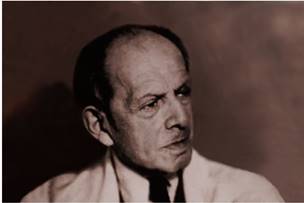 Abram Zalmanov (1875-1965) – doctor of medicine, gerontologist, who introduced the method of treating diseases with turpentine baths.
Abram Zalmanov (1875-1965) – doctor of medicine, gerontologist, who introduced the method of treating diseases with turpentine baths.
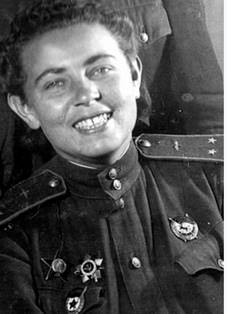 Polina Gelman (1919 -2005) – Hero of the USSR, chief of communications of the aviation squadron of the 46th guards light bomber night aviation regiment, senior lieutenant of the guards.
Polina Gelman (1919 -2005) – Hero of the USSR, chief of communications of the aviation squadron of the 46th guards light bomber night aviation regiment, senior lieutenant of the guards.
 Galina Dokutovich (1921-43) – participant of the Great Patriotic War, navigator of the 46th Guards light bombardment night aviation regiment, guards junior lieutenant.
Galina Dokutovich (1921-43) – participant of the Great Patriotic War, navigator of the 46th Guards light bombardment night aviation regiment, guards junior lieutenant.
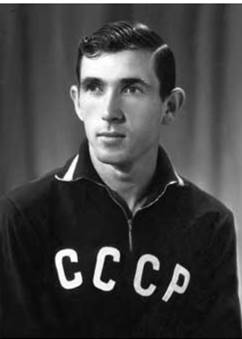 Leonid Geishtor – the first Belarusian Olympic champion. He won a gold medal at the XVII Olympic Games in Rome in 1960 in two-man canoeing with Sergey Makarenko in the 1000 m race.
Leonid Geishtor – the first Belarusian Olympic champion. He won a gold medal at the XVII Olympic Games in Rome in 1960 in two-man canoeing with Sergey Makarenko in the 1000 m race.
 Millionnaya Street (Biletsky). The building of the men's gymnasium. Photo 1890 – 1891 .
Millionnaya Street (Biletsky). The building of the men's gymnasium. Photo 1890 – 1891 .
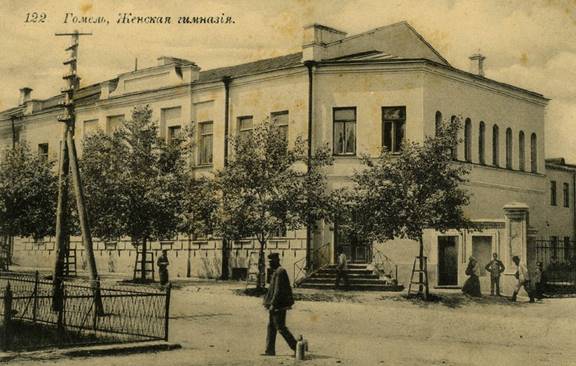 Millionnaya street (Biletsky). The building of the women's gymnasium. Photography of the early twentieth century .
Millionnaya street (Biletsky). The building of the women's gymnasium. Photography of the early twentieth century .
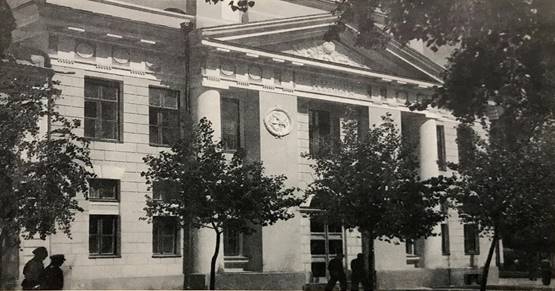 Beletsky street. The building of the Forestry College. Photo from the album «Gomel in photo illustrations», 1961
Beletsky street. The building of the Forestry College. Photo from the album «Gomel in photo illustrations», 1961
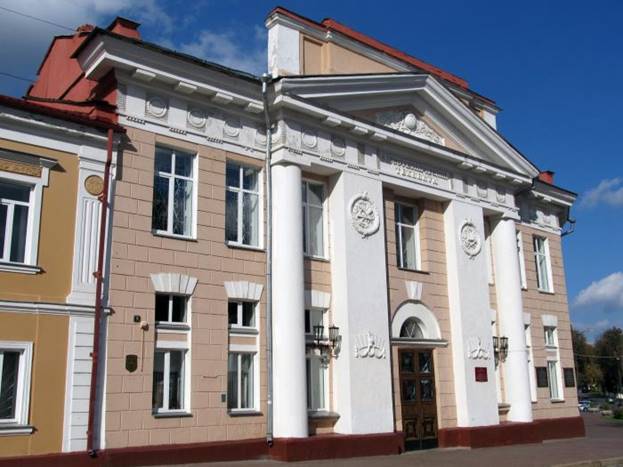 Beletsky street, house №.6. Photo 2022. г
Beletsky street, house №.6. Photo 2022. г